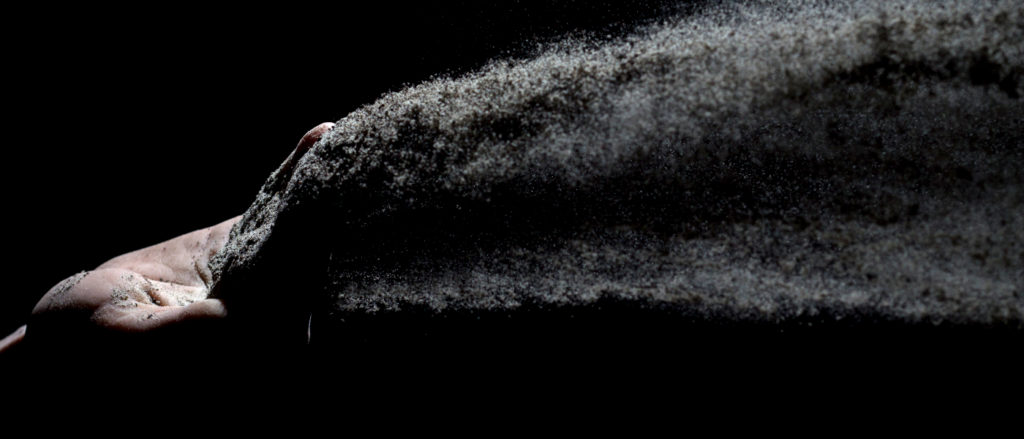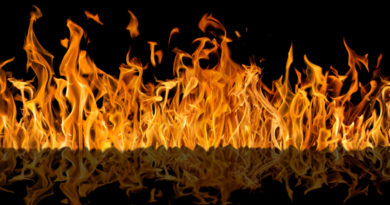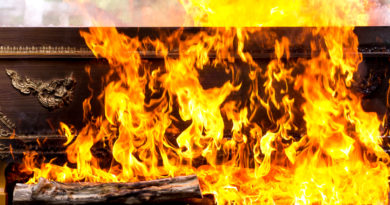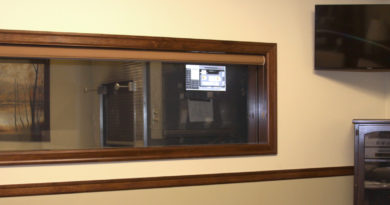How to Scatter Cremated Remains on Land, Air or Water

a loved one’s cremated remains. Photo © iStock.com/MDPh
Because movies and television shows often depict people scattering a loved one’s “ashes” (sometimes comically due to the wind), you might imagine that scattering cremated remains involves simply pouring them out of the urn into the air. The truth is that you can scatter cremated remains on land, in the air or over water in a variety of meaningful ways, which this article explains.
Decisions to Make Beforehand
First, you should select a scattering site or location meaningful to the deceased and/or other loved ones. Then, you should determine how many people will physically perform the scattering, i.e., one person or several close family members or friends.
Next, decide whether to keep the cremated remains in a single vessel or divide them beforehand based on what you have in mind. Many companies today sell smaller individual urns or memorial “keepsake” versions designed to hold a portion of a cremated individual’s remains, which might prove convenient when several people will scatter the remains. However, many families use the single temporary container provided by their funeral home or cremation provider, or an urn they purchased, regardless of how many loved ones will perform the scattering.
By the way, even if you choose to scatter your loved one’s cremated remains, it is not uncommon, and perfectly acceptable, to keep a small portion of the ashes as a permanent, physical reminder of the deceased. Many survivors place these remains in memorial jewelry or an individual urn specifically designed for this purpose.
After you have made your decisions, you can then scatter cremated remains via any of the following methods:
Earth Scattering
Many people do not realize that families may bury the inurned remains of cremated loved ones in cemetery and memorial park gravesites, just like casketed remains. Burying the remains within an urn is possible elsewhere, obviously, but many families want to return the ashes directly to the earth by:
- Releasing them slowly onto the ground in a shape, such as a heart, star or peace sign, or a word, such as the name of the deceased. Survivors often use a small rake afterward to mix the ashes with the soil.
- Emptying the container into a deep hole beneath a memorable or meaningful spot, such as a tree, prominent rock or some other natural or manmade marker, and then covering the hole with soil.
- “Trenching,” which involves digging a shallow furrow in the ground — in a straight line or a desired shape — before pouring the cremated remains inside and covering with soil.
Air Scattering
- One person can pour all of the cremated remains directly out of the temporary container or urn at once.
- He or she can release a portion of the ashes before passing the urn to someone else, who will do the same.
- One or more individuals can use their hands to toss a portion of the remains into the air, often preceded by sharing a prayer or a favorite memory about the deceased.
- If the cremated remains were divided beforehand into smaller portions, group members can scatter them all at once or one at a time as others watch.
Water Scattering
- Similar to some of the scattering techniques above, you can pour all of the cremated remains directly out of the temporary container or urn at once, whether from the shore or from a canoe, boat, kayak, etc.
- Each survivor can release a portion of the ashes before passing the urn to someone else, who will do the same.
- One or more individuals can use their hands to toss a portion of the remains onto the water’s surface.
- If divided beforehand into smaller portions/containers, group members can scatter the ashes all at once or one at a time as others watch.
Keep in Mind When Scattering…
Most people conceive of cremated remains as a fine, powdery substance similar to talcum powder or the ash that remains after burning logs in a fireplace or campfire pit. The reality is, however, that cremated remains generally comprise a mixture of finer, dust-like particles; larger sand-like bits; and even some heavier fragments of human bone. Thus, don’t expect all of your loved one’s cremated remains to drift away in the air; most of the cremated remains will probably fall directly to the ground when scattering.
That said, you should always check the strength and direction of the wind before you scatter. While it might seem funny on T.V. or in a movie to see an actor receive a mouthful of “ash” after failing to take the wind into account, this is a mishap you should avoid.
Finally, bring along some water and paper/cloth towels in case you need to clean up afterward. The finer, dust-like particles typically present in cremated remains can stick to your skin, particularly when perspiration, hand lotion, water or some other “wetting agent” is present.







